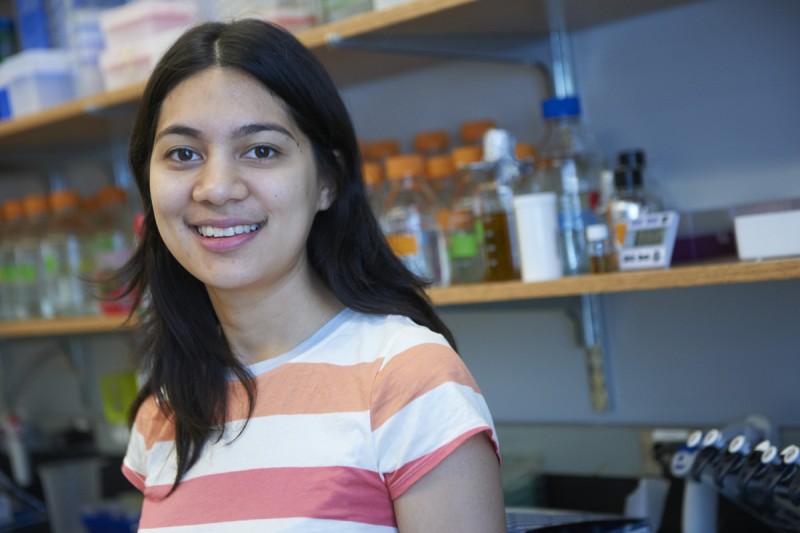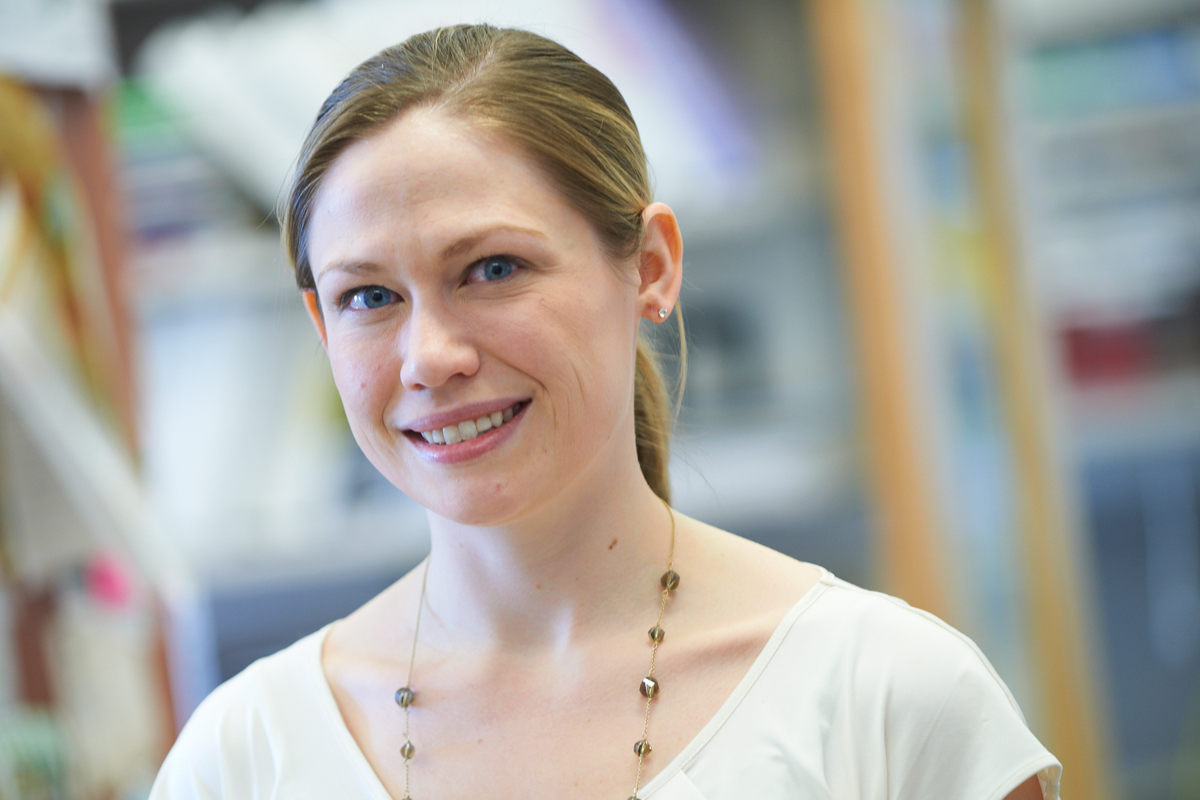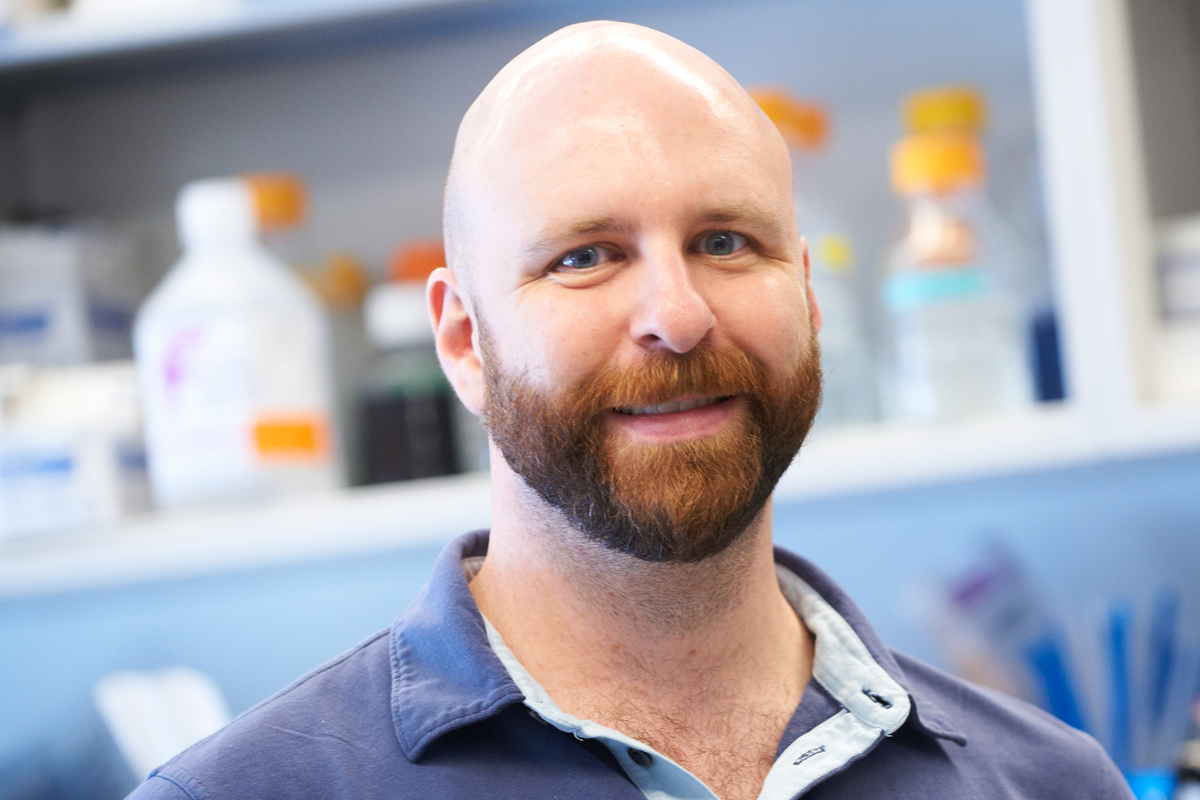
Six students at the Gerstner Sloan Kettering Graduate School of Biomedical Sciences have successfully defended their dissertations. As part of Memorial Sloan Kettering’s 34th annual academic convocation on May 10, the Louis V. Gerstner, Jr. Graduate School of Biomedical Sciences will award PhD degrees to Karen Hunter, Nicholas Gauthier, Ellen Hukkelhoven, Jeffery R. Smith, Yvonne Gruber Mica, and Alexandria Miller.
The graduation of these students brings the number of graduates of the school to ten.

Karen Hunter completed research in the laboratory of Johanna Joyce that investigated several tumor cell intrinsic and tumor cell extrinsic factors in pancreatic neuroendocrine tumors (PanNETs), a rare and poorly understood tumor type. She focused on regulators of poor prognosis in this tumor type, including the matrix-degrading enzyme heparanase, and her work has opened up multiple new research directions that may provide important insights into patient treatment.
After she finished her dissertation, Karen worked as a postdoctoral research fellow in the Joyce lab. Beginning in February, she began a job as a senior analyst at The Dedham Group, a boutique management and strategy consulting company to the life sciences industry.

Nicholas P. Gauthier’s dissertation project, conducted in the laboratory of Chris Sander, involved the development of a new method that enables selective and continuous labeling of proteins within distinct cell populations in multicellular environments. This research provides investigators with a new tool for comprehensive mapping of cell-cell communication, which is especially important in all aspects of cancer development, maintenance, and response to therapy. “In addition to enabling a basic understanding of how cells communicate, we further envision the use of this labeling approach as a platform for diagnostic and prognostic biomarker discovery, linking labeled proteins directly to diseased cells,” Nicholas said.
Nicholas is now a research scholar in the Department of Computational Biology, still under the mentorship of Chris Sander.

Ellen Hukkelhoven studied the regulation of a novel tumor suppressor in gliomas in the laboratory of Andrew Koff. She studied the kinases that phosphorylate and regulate this tumor suppressor and identified key phosphorylation sites that regulate its function.
After spending six months as a biotechnology analyst at a hedge fund, Ellen will be an Associate at McKinsey and Company, focusing on healthcare. “Ultimately, I hope to be involved in the intersection of science and business, helping commercialize groundbreaking technologies so they are able to reach the market,” Ellen said.

Working in the laboratory of Alan Hall, Jeffery R. Smith’s research focused on signal transduction pathways that regulate the organization of the actin cytoskeleton and their possible contribution to the invasive phenotype of breast cancer cells. He identified a regulator of the Rac GTPase, Tiam2, that is highly overexpressed in several human breast cancer cell lines. “Drugs targeting these proteins could prevent breast cancer from spreading into surrounding tissues and may be applicable to many cancer types,” Jeff explained. “This is open therapeutic space and discovery of potential drug targets is a key to stopping metastasis.”
He is currently pursuing a career in management consulting with a focus on life sciences and healthcare.

The goal of Yvonne Gruber Mica’s project in the laboratory of Lorenz Studer was to establish a system that would allow a better understanding of the development of melanocytes, the pigment-producing cells that help protect skin from the harmful effects of UV radiation. Improper functioning of melanocytes can lead to pigmentation defects, such as those observed in Hermansky-Pudlak and Chediak-Higashi syndromes. She used human embryonic stem cells as a tool for mimicking the events that occur naturally during melanocyte development and, through a new technology, induced pluripotent stem cells that she then turned into melanocytes. Using this approach she was able to show that these stem cell-derived melanocytes recapitulate the pigmentation defects expected in Hermansky-Pudlak and Chediak-Higashi syndromes. In the future she will be able to use stem-cell-derived melanocytes to answer questions about the development of melanocytes in high-throughput screening studies to find drugs to treat pigmentation disorders, and ultimately as a novel approach for investigating the skin cancer malignant melanoma.
Yvonne will continue in the Studer lab to complete a project that is an extension of her thesis work. She will be using the system of embryonic stem-cell-derived melanocytes to establish a novel platform to study malignant melanoma.

Through her thesis work in the laboratory of Stephen Long, Alexandria Miller was able to determine the first high-resolution three-dimensional structure of a human two-pore domain (K2P) potassium channel family member, K2P1. At the time, this structure represented one of only approximately 15 human membrane protein structures that had been solved. K2P channels represent a class of potassium channels that function to establish and maintain the resting potential in eukaryotic cells. The K2P1 structure lays a foundation for further investigation of how these channels are regulated by diverse stimuli, including temperature, pH, polyunsaturated fatty acids, mechanical stress, and anesthetics. The structural features unique to K2P channels provide possible targets for K2P-specific therapeutics and an important direction for future work.
Alexandria will remain in Dr. Long’s lab for a year after graduation as a research scholar to complete a project and plans to go on to do a postdoctoral fellowship.